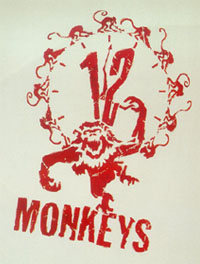Bubonic Plague Kills a Monkey at the Denver Zoo
 (New York Times) The death of a monkey at the Denver Zoo from bubonic plague has prompted officials to change the habitats of some zoo animals and renew efforts to keep visitors from feeding the urban wildlife here. The animal, an 8-year-old female hooded capuchin monkey named Spanky, was the first zoo animal to be infected with the plague since an outbreak was detected last month in squirrels and a rabbit in City Park, just outside the zoo. Bubonic plague, which came to be called the Black Death as it killed millions of people throughout Europe in the 14th century, is carried by fleas that infect rodents. Today, it is found mainly in rural areas of the West. While it can be deadly in humans and some animals, bubonic plague is treatable.
(New York Times) The death of a monkey at the Denver Zoo from bubonic plague has prompted officials to change the habitats of some zoo animals and renew efforts to keep visitors from feeding the urban wildlife here. The animal, an 8-year-old female hooded capuchin monkey named Spanky, was the first zoo animal to be infected with the plague since an outbreak was detected last month in squirrels and a rabbit in City Park, just outside the zoo. Bubonic plague, which came to be called the Black Death as it killed millions of people throughout Europe in the 14th century, is carried by fleas that infect rodents. Today, it is found mainly in rural areas of the West. While it can be deadly in humans and some animals, bubonic plague is treatable.
Mystech: And the cause? Squirrel bio-terrorists infected one of their own fanatics, who then infiltrated the zoo enclosure. 11 monkeys to go.
The zoo’s senior veterinarian, Dr. Dave Kenny, said that the capuchin monkeys were recently moved to their summer habitat, an island with tall trees that squirrels can climb. Dr. Kenny said he thought that Spanky “found a nest of ground squirrels” that carried the plague.
“Because it was pretty acute,” he said, “it makes the most sense that she ingested an infected squirrel.”
Spanky appeared lethargic last Tuesday and was found dead last Wednesday morning. The cause was confirmed Friday.
While none of the 17 other capuchin monkeys at the zoo have shown signs of illness, all are being treated with antibiotics and have been moved back to cages where visitors can still see them swinging around.
“It’s not particularly shocking,” said Steve Feldman, a spokesman for the Association of Zoos and Aquariums, a nonprofit zoo accreditation group in Silver Spring, Md. “And it shouldn’t be alarming to the public, either. Animals in zoos are kept appropriately separated from the visiting public and receive the highest level of veterinary care.”
There are 4,000 animals at the Denver Zoo, and Dr. Kenny said it was not known how susceptible many exotic animals were to the plague. To prevent any possible exposure, zoo officials decided Tuesday not to open a summer exhibit where visitors have been previously allowed to pet Nubian and pygmy goats. In addition, some animals will be fed indoors, rather than outside where leftover grains could attract squirrels.
After the plague was discovered, zoo officials put up large signboards with pictures of squirrels that read, “I know I am cute, but please don’t feed or touch me!” Although officials say that the chance of contamination from hungry squirrels to humans is “slim to none,” they want to discourage any interactions. Staff members will also patrol the zoo to “share information” about the plague and monitor squirrel activity.
“We see plague every year in rural and semirural areas,” said Dr. John Pape, an epidemiologist with the Colorado Department of Public Health and Environment. “It is unusual to see it in the center of an urban area, but it is not unprecedented.”
Dr. Pape said the infection did not come as a complete surprise because squirrels had “24/7 access” to the zoo and could get into the wild-animal enclosures.
On Tuesday, neither rain nor plague kept visitors from the zoo, and employees and volunteers said visitors seemed unconcerned about the health risk.
“I’ve been kind of expecting questions, but I didn’t get any yet,” said a zoo docent, Melissa DeCost, who was showing schoolchildren an anteater’s skull. “I would tell them not to feed the squirrels though.”
Glenda Reynolds, who was serving as a chaperone to a group of schoolchildren from Cheyenne, Wyo., said there was little concern about the plague. “We already tell our kids not to touch or feed the animals here,” Ms. Reynolds said. “No kids asked about it.”
But at the caged capuchin monkey exhibit, Ryan Picket, 9 was pointing and shouting, “These are the monkeys that died.” Ryan said he learned of the plague from watching the news on television. “I thought it was kind of sad, and I was kind of nervous to come to the zoo today.”
Ryan’s father, Matt Picket, was less dramatic. “I don’t think it’s really that big of a deal,” Mr. Picket said. “There are so few squirrels around, and we are telling the kids not to touch or feed them.”
The current spread of plague here could be wiped out with the dry heat of summer. “If it gets hot and dry,” Dr. Pape said, “the fleas won’t survive.”






